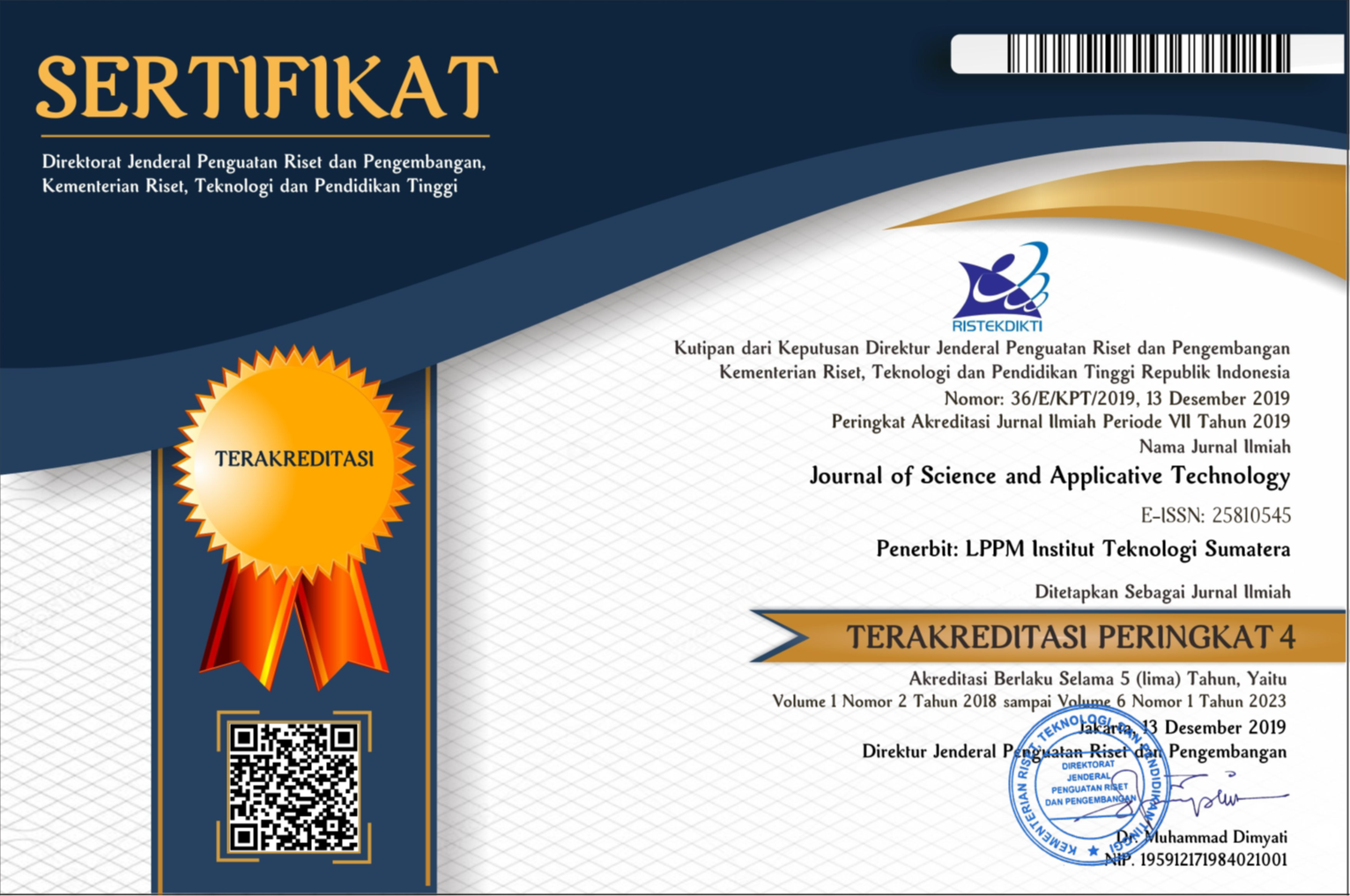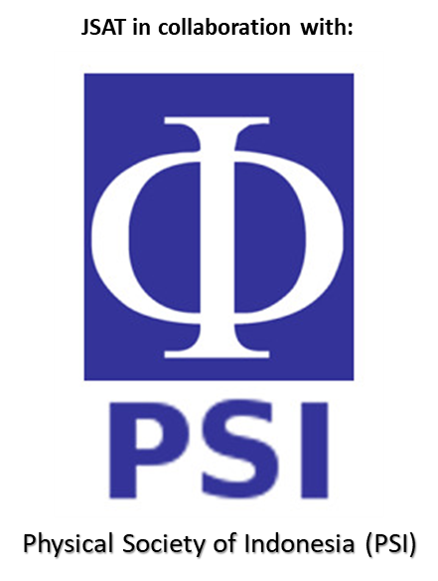Non-linear Geostatistics Approach for An Integrated Surface Mapping in Epithermal Gold Deposit, Lampung
Abstract
A conventional surface mapping is calculated by any means of linear interpolator such as nearest neighborhood point (NNP), inverse distance (IDW)/inverse distance square (IDS), polygon, contour weighing, Ordinary Kriging (OK). The latter is included in geostatistic methods and provides more advanced weighing method that differs from the rest. Although OK provides smoothing over mapping data but it does not cover categorial (non-value) data. Besides, it is not best in strongly skewed data that are common in exploration data and is limited to the expected value at some location. On the other hand, a non-linear interpolator is conducted to estimate the conditional expectation at a location, that not only to simply predict the grade or other parameter itself, but also the probability of the parameter at a location with known nearby samples. An integrated surface mapping should have many kinds of data that can be categorized into continous data (grade, thickness, elevation, etc.) and categorial data (lithology, alteration, structural data, etc.). In order to create a block that consist of all data available in a given deposit, a non-linier transformation will be conducted to estimate values at determined thresholds by Kriging methods – known as Indicator Kriging method and its variants.
Downloads
References
[2] R. J. Durrheim, M. S. D. Manzi, and S. J. Webb, “Exploration Geophysics,†in Encyclopedia of Geology, 2nd ed., D. Alderton and S. A. B. T.-E. of G. (Second E. Elias, Eds. Oxford: Academic Press, 2021, pp. 219–234.
[3] D. Müller, K. Kwan, and D. I. Groves, “Geophysical implications for the exploration of concealed orogenic gold deposits: A case study in the Sandy Lake and Favourable Lake Archean greenstone belts, Superior Province, Ontario, Canada,†Ore Geol. Rev., vol. 128, p. 103892, 2021.
[4] A. S. Macheyeki, X. Li, D. P. Kafumu, and F. Yuan, “Elements of exploration geochemistry,†in Applied Geochemistry: Advances in Mineral Exploration Techniques, Elsevier, Inc., 2020, pp. 1–43.
[5] A. M. Evans, Introduction to mineral exploration, 2nd ed. Oxford, UK: Blackwell Publishing, 2006.
[6] S. M. Gandhi and B. C. Sarkar, “Chapter 7 - Geological Exploration,†in Essentials of Mineral Exploration and Evaluation, S. M. Gandhi and B. C. B. T.-E. of M. E. and E. Sarkar, Eds. Elsevier, 2016, pp. 159–198.
[7] A. J. Sinclair and G. H. Blackwell, Applied Mineral Inventory Estimation. Cambridge: Cambridge University Press, 2004.
[8] S. K. Haldar, “Mineral Resource and Ore Reserve Estimation,†in Mineral Exploration: Principles and Application, 2nd ed., Elsevier, Inc., 2018, pp. 145–165.
[9] d. g Krige, Statistical applications in mine valuation. 1962.
[10] S. K. Haldar, “Chapter 9 - Statistical and Geostatistical Applications in Geology,†in Mineral Exploration, S. K. B. T.-M. E. (Second E. Haldar, Ed. Elsevier, 2018, pp. 167–194.
[11] S. KASMAEE, J. GHOLAMNEJAD, A. YARAHMADI, and H. MOJTAHEDZADEH, “Reserve estimation of the high phosphorous stockpile at the Choghart iron mine of Iran using geostatistical modeling,†Min. Sci. Technol., vol. 20, no. 6, pp. 855–860, 2010.
[12] K. Saikia and B. C. Sarkar, “International Journal of Coal Geology Coal exploration modelling using geostatistics in Jharia coal fi eld , India TO GO RAILWAY STATION,†Int. J. Coal Geol., vol. 112, pp. 36–52, 2013.
[13] E. Pardo-igúzquiza, P. A. Dowd, J. M. Baltuille, and M. Chica-olmo, “International Journal of Coal Geology Geostatistical modelling of a coal seam for resource risk assessment,†Int. J. Coal Geol., vol. 112, pp. 134–140, 2013.
[14] S. M. Gandhi and B. C. Sarkar, “Geostatistical Resource/Reserve Estimation,†in Essentials of Mineral Exploration and Evaluation, Elsevier, Inc., 2016, pp. 289–308.
[15] M. Z. Abzalov and M. Humphreys, “Resource Estimation of Structurally Complex and Discontinuous Mineralization Using Non-linear Geostatistics : Case Study of a Mesothermal Gold Deposit in Northern Canada,†Explor. Min. Geol., vol. 11, no. 1–4, pp. 19–29, 2002.
[16] G. D. Faye, A. Yamaji, K. Yonezu, T. Tindell, and K. Watanabe, “Paleostress and fluid-pressure regimes inferred from the orientations of Hishikari low sulfidation epithermal gold veins in southern Japan,†J. Struct. Geol., vol. 110, no. October 2017, pp. 131–141, 2018.
[17] E. H. Isaaks and R. M. Srivasta, An Introduction to Applied Geostatistics. New york: Oxford University Press, 1989.
[18] J. W. Hedenquist, Y. Matsuhisa, E. Izawa, N. C. White, W. F. Giggenbach, and M. Aoki, “Geology, geochemistry, and origin of high sulfidation Cu-Au mineralization in the Nansatsu district, Japan,†Econ. Geol., vol. 89, no. 1, pp. 1–30, 1994.
[19] N. C. White and J. W. Hedenquist, “Epithermal Gold Deposits: Style, characteristics, and exploration,†Society of Economic Geologists Newsletter, pp. 9–13, Oct-1995.
[20] D. P. Cox and W. C. Bagby, “Descriptive model of Au-Ag-Te veins,†Mineral Deposit Models, US Geol. Surv. Bull., vol. 1693, p. 124p, 1986.
[21] W. Khant, I. W. Warmada, A. Idrus, L. D. Setijadji, and K. Watanabe, “Geochemical Characteristics of Host Rocks of Polymetallic Epithermal Quartz Veins at Soripesa Prospect Area, Sumbawa Island, Indonesia,†Procedia Earth Planet. Sci., vol. 6, pp. 30–37, 2013.
[22] D. J. Rumsey, Statistics for Dummies, 2nd ed. Canada: Wiley Publishing, Inc., 2011.
[23] M. P. Barnes, Computer-assisted mineral appraisal and feasibility. Society for Mining Metallurgy, 1980.
[24] M. Armstrong, Basic Linear Geostatistics. New York: Springer-Verlag Berlin Heidelberg, 1998.
[25] G. Matheron, “Theory of regionalized variables and its applications.,†Cah. Cent. Morrphol. Math., vol. 5, p. 211, 1971.
[26] G. Matheron and C. D. M. Mathematique, “The intrinsic random functions and their applications,†vol. 5, no. March 1973, pp. 439–468, 1973.
[27] R. A. Olea, Geostatistics for engineers and earth scientists, 3rd ed. New York: Springer Science & Business Media, 2012.
[28] F. Pirajno, Hydrothermal processes and mineral systems. Springer Science & Business Media, 2008.
Copyright (c) 2021 Journal of Science and Applicative Technology

This work is licensed under a Creative Commons Attribution-NonCommercial 4.0 International License.
All the content on Journal of Science and Applicative Technology (JSAT) may be used under the terms of the Creative Commons Attribution-NonCommercial 4.0 International License.
You are free to:
- Share - copy and redistribute the material in any medium or format
- Adapt - remix, transform, and build upon the material
Under the following terms:
- Attribution - You must give appropriate credit, provide a link to the license, and indicate if changes were made. You may do so in any reasonable manner, but not in any way that suggests the licensor endorses you or your use.
- NonCommercial - You may not use the material for commercial purposes.
- No additional restrictions - You may not apply legal terms or technological measures that legally restrict others from doing anything the license permits.





















